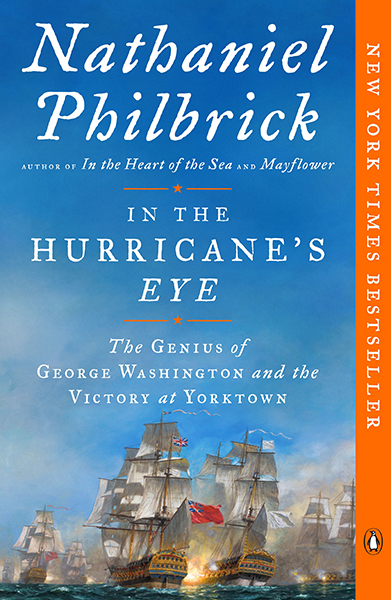Authors:
Historic Era: Era 3: Revolution and the New Nation (1754-1820s)
Historic Theme:
Subject:
Fall 2019 - George Washington Prize Books | Volume 64, Issue 5


Authors:
Historic Era: Era 3: Revolution and the New Nation (1754-1820s)
Historic Theme:
Subject:
Fall 2019 - George Washington Prize Books | Volume 64, Issue 5
Excerpted from the George Washington Book Prize finalist In the Hurricane's Eye: The Genius of George Washington and the Victory at Yorktown by Nathaniel Philbrick, published by Viking Penguin, an imprint of Penguin Publishing Group, a division of Penguin Random House, LLC. Copyright © 2018 by Nathaniel Philbrick, published in Penguin Books 2019.

When France entered the American Revolutionary War in the spring of 1778, George Washington dared to hope his new ally had put victory within reach. Finally, the British navy's hold on the Atlantic Seaboard was about to be broken. If the French succeeded in establishing what Washington called "naval superiority," the enemy's army would be left open to attack from not only the land but also the sea. But after two and a half years of trying, the French had been unable to contain the British navy.
First, an inexplicably protracted Atlantic crossing prevented French admiral Comte d'Estaing from trapping the enemy's fleet in Philadelphia. Shortly after that, d'Estaing turned his attention to British-occupied New York, only to call off the attack for fear his ships would run aground at the bar across the harbor mouth. A few weeks after that, a storm off the coast of southern New England prevented d'Estaing from engaging the British in a naval battle that promised to be a glorious victory for France.
Since then, a botched amphibious assault at Savannah, Georgia, had marked the only other significant action on the part of the French navy, a portion of which now lay frustratingly dormant at Newport at the southern end of Rhode Island's Narragansett Bay. By the fall of 1780, amid the aftershocks of devastating defeats at Charleston and Camden in South Carolina and Benedict Arnold's treasonous attempt to surrender the fortress at West Point to the enemy, Washington had come to wonder whether the ships of his salvation would ever appear.
For the last two years he'd been locked in an unproductive standoff with Sir Henry Clinton, the British commander in North America, in and around New York City. What fighting had occurred had been, for the most part, in the south, where British general Charles Cornwallis sought to build upon his recent victories by pushing into North Carolina. Between the northern and southern theaters of the war lay the inland sea of the Chesapeake, which had enjoyed a period of relative quiet since the early days of the conflict.
All that changed in December 1780, when Clinton sent his newest brigadier general, the traitor Benedict Arnold, to Virginia. Having already dispatched the Rhode Islander Nathanael Greene to do battle with Cornwallis in the Carolinas, Washington sent the young